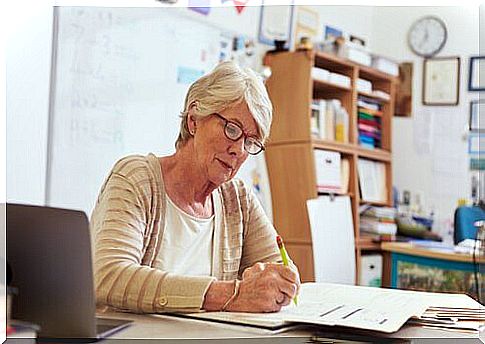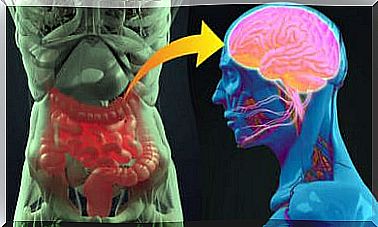Do Exams Really Serve To Evaluate Pupils?

Before verifying whether the classic exams are actually valid and reviewing the possible alternatives, it is important to understand what evaluation is and what objectives it sets. If we asked what the evaluation of a pupil consists of, anyone would probably answer us in an indirect way that serves to verify if the student has the necessary skills regarding a certain subject.
So that the pupil who proves to possess them passes the exam, otherwise he is rejected. The reality, however, is quite different, and it is difficult for this “law” to be effective, just as, within our educational system, the purpose that the evaluative tests should pursue often fails.

A correct assessment within the education system must take into account the knowledge and actual skills of the pupil in order to establish at which point in the learning path they are. What, then, is the purpose of the evaluation? Definitely clarify whether the teaching method adopted is working for the “tested” pupil: a very simple purpose that the teachers themselves often forget.
In this way the grade, rather than being a “quantification” of the pupil’s knowledge, calculated on the basis of a scale of value established by the teacher, should clarify whether the didactic approach set by the teacher is productive or not so that the pupils assimilate certain knowledge.
Considered in this sense, assessment is certainly an effective method at the service of students during their learning process. Conversely, considering evaluation as a mere criterion for selecting or classifying pupils is nothing more than a limited vision of it.
Problems of traditional exams
If we consider assessment as a tool in the teacher’s hand to guide students and at the same time reflect on their teaching method, it is evident that traditional exams pose various problems that hinder the achievement of both objectives. For example, it may happen that:
Only the pupil is evaluated
The only one to be judged is the student, without the teacher making the effort to verify whether the method adopted by him and the educational context as a whole are adequate for the student to progress in learning. Which is why there are so many professors known because they “all fail”.
The professor is the only one to evaluate the evidence
The pupil is solely in the hands of the teacher and his judgment. There are no other criteria than that of the teacher responsible for teaching the subject.
Only the results matter
Traditional exams can provide data on the pupil’s knowledge, but not on the entire learning path. It is not possible to establish whether the skills tested are the result of a deep understanding of the topic in question or whether they were memorized by the pupil the day before, since only the result emerges from the tests.
Only knowledge counts
The particular situation of the pupil, his shortcomings and his strengths are not taken into account. In this way, it is impossible to direct him along his learning path, because he is not aware of his resources and limitations.
The assessment is conducted only in a quantitative manner
Traditional exams are often perceived only as a grade, a score which should show the degree of knowledge or skill level the pupil possesses in a given subject.
Competition is promoted rather than cooperation
Grading pupils with grades or scores helps to create a competitive environment. In this way, within a competition indirectly created by the education system itself, it is easy for the pupil to become a good grade rather than focusing on a deep understanding of a topic or subject.

Alternatives to traditional exams
Taking into consideration the problems that a traditional type evaluation presents, the search for valid alternatives is almost a must. An evaluation, to be effective, must be based on three elements: the evaluation by skills, the portfolio, the use of information and communication technologies.
Assessment by skills
The aim of the teaching is to make pupils acquire a set of knowledge and at the same time, if not above all, a range of skills. For example, the objective of mathematics may be that the pupil becomes familiar with some processes and memorises some formulas, but above all that he understands how they work and that he knows how to apply them in solving problems.
A correct assessment should show which skills the pupil is able to master and which he or she lacks. Only in this way is it possible to guide their learning in such a way as to allow them to refine the skills already possessed and stimulate them towards the achievement of others. For this process to work, it is essential to carefully plan the skills to be achieved within the curriculum, and that it is the background to a teaching approach that is as flexible and personalized as possible.
The Portfolio System
The competency assessment suggests what needs to be assessed, but it does not tell us how. The portfolio system introduces a personalized assessment method focused on the pupil’s progress. What exactly does the portfolio consist of?
The psychologist Kingore defines it as “the systematic and representative collection of the pupil’s work, agreed between teacher and student, which aims to provide the necessary information about the student’s path, his learning profile, his interests, objectives achieved and the evolution of the level of competence over time “
In other words, the portfolio is a sort of “binder” within which the pupil places all the works created for a specific subject; it is constantly monitored by the teacher who takes into account its evolution. This allows teachers to check the learning status of each pupil and to use this data as a starting point for organizing teaching. Obviously, it also allows us to establish whether the student has developed the required skills over time.
The problem that the creation of the portfolio implies is the complexity of managing such a job given the amount of information it would have to collect and file. To simplify this work, it is possible to resort to so-called information and communication technologies.

Information and Communication Technologies (ICT)
The computer, the internet and the various communication systems (ICT, in English) offer a valid help in the evaluation. ICTs are effective, for example, for portfolio management: the existence of online programs that deal with processing all the information entered by pupils and professors in the various electronic portfolios greatly facilitates the assessment.
We conclude with a question to reflect on: despite the shortcomings that traditional exams present and the existence of valid alternatives, why do they continue to be the evaluation system par excellence?









